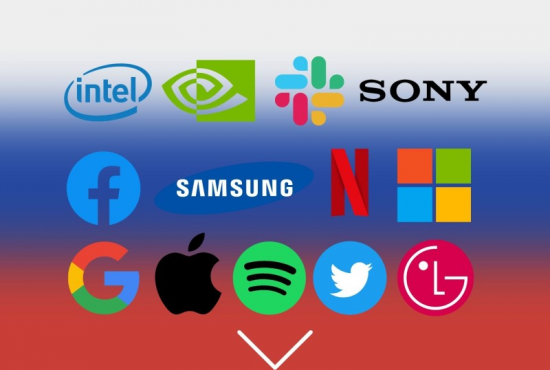Can HR prevent Quiet Quitting from occurring?

Yes, you can stop the trend by adopting the attitude of "my time is precious," "I want to take care of myself and regain control of my emotional and physical well-being by creating appropriate boundaries at work."
There are many different viewpoints on the matter. Some people believe that we shouldn't have to go above and beyond at work and give our life as a sacrifice. Some people believe that it only makes sense to consciously establish that separation between work and life. Some believe that Quiet Quitting is professional suicide.
However, according to a McKinsey study, more than 40% of workers are thinking about changing jobs. Organizations will probably struggle to achieve their goals if they combine that with Quiet Quitters, who are less likely to be engaged at work and more likely to adhere closely to the parameters of their job description.
Since engagement plays a role in almost all types of quitting, Quiet Quitting isn't wholly novel to HR professionals like you. However, you should prevent resigning in any form, particularly considering that many businesses are only now recovering from the Great Resignation.
According to Niamh Graham, SVP of Global Human Experience at Workhuman, "Work is not simply a place anymore; it should be a source of rewarding connections and a community to which workers feel engaged." "It should increase their pleasure and give their lives significance, making them feel like a part of something greater, better, and positive."
As a result, HR and front-line managers want to take action right once to avoid Quiet Quitting (or Loud Quitting or everyday quitting). Here are five strategies for maintaining employee engagement or regaining it after the Great Resignation:
Know who is quietly leaving
While any employee may lose interest in their work and get bored with the aspects of their employers that initially drew them in, certain workers are more prone to discreetly leave their positions: Your more youthful employees.
According to a Gallup study, just about 55% of workers who were born after 1989 are actively engaged. The essence of quiet quitting is that they turn up for work and put in the barest minimum.
Additionally, a Talkspace/The Harris Poll Employee Stress Check 2022 Report found that employees between the ages of 18 and 34 are more likely than the rest of the workforce to feel burned out.
The correlation between successful firms and employee wellbeing is undeniable, and our data confirm this. Employers need to pay attention and make significant investments in the long-term wellbeing of their workforce. Their workplaces depend on it, says Talkspace's Chief Medical Officer, Dr. Varun Choudhary, MD, MA, DFAPA.
Be out for signs of stress among younger employees. Front-line managers should receive training on aberrant stress symptoms and how to support staff.
Bring back the recognition
Employee disengagement is largely caused by a lack of appreciation for their efforts on the part of management. And it makes it much harder for them to see the worth and point of their labor.
When he talked at Workhuman Live 2022, Ed O'Boyle, Global Practice Leader at Gallup, noted that "good recognition prevents burnout." "Lack of acknowledgement fuels it."
Unfortunately, it appears as though burnout—and its unfortunate byproduct, Quiet Quitting—is on the rise. In one of O'Boyle's research, over 85% of business executives claimed that recognition is not a strategic goal.
The C-Suite may need to be nudged on this issue by HR specialists. Recognizing their efforts is essential for fostering employee engagement. Employees are more likely to remain engaged when they recognize the benefits of going above and beyond. They must be aware of how their job affects their coworkers, the success of the business, their community, and/or the larger good.
Give workers the tools and authority to praise one another for their important efforts. It is beneficial on two fronts:
1) Managers are unable to witness or experience all of their employees' commendable efforts;
2) Employees frequently know one another best and are aware of what is important to one another.
Adapt to current demands
Today's workplace places a lot more emphasis on purpose in order to engage employees. Perks still have a role in increasing engagement and reducing attrition, though.
Recognize and respond to the many working scenarios, including remote, hybrid, and on-site ones, as well as how to make each one more welcoming and pleasant for employees.
According to a research by Framery and Feelback Group, for example, over half of employees who are present at work feel that access to dedicated quiet spaces in open-plan offices and wellness benefits like workplace gyms and yoga studios are desired benefits. Communal game rooms and beverages on tap, which used to be desirable employment benefits, are now at the bottom of their list.
Samu Hällfors, CEO of Framery, thinks that the findings "should hammer a final nail in the coffin of the ping pong tables, beer kegs, scooters and other artifacts of 'mandatory fun' workplace culture. "Without the continual interruptions of an open workplace, working from home allowed folks to work out more frequently and produce higher-quality work. These are observable advantages that increased productivity and made workers happy, and it's obvious that they don't want to give them up when they go back to work.
However, that does not imply that all workplaces benefit from those specific benefits. To locate your optimal perks, HR professionals will want to consult with executives (to assess the financial capacity to offer perks) and front-line managers (to assess the competence to execute). To find out what will keep employees engaged, you should poll the workforce.
Make more connections
People don't leave their jobs or subtly resign from them. They quit bosses. Front-line supervisors should communicate with staff members more frequently, especially those who work remotely.
According to Elizabeth DeGroot, Eden's director of people and finance, "checking in often via weekly one-on-ones that include both professional and personal growth can help workers feel more engaged and inspired in their career paths and present positions."
Assist front-line managers in conducting fruitful one-on-one sessions with their staff. The subject may be covered in management training. Better yet, provide them with guidelines for conducting insightful, fruitful interactions that support professional growth and engagement.
More career management is needed
Quitting quietly is a professional choice. Employees have made or are thinking about making a career move. Additionally, it's unlikely that the decision to Quiet Quit would have the same effect as it formerly had.
Try to assist employees in defining their best careers with you at a time when turnover is still high and they are becoming more picky about the work arrangements they think are optimal (remote was popular, now hybrid is).
By assisting employees in better managing their careers from the moment they begin working for you, you may be able to stop them from making a Quiet Quitting decision.
According to the LinkedIn Workplace Learning Report, 94% of employees would continue working there longer if they had access to professional development.
Here is an example of a great practice: Verizon developed the Talent GPS, which provides a comprehensive picture of jobs across the firm and the critical skills required for each. With this, staff members may manage their own career paths inside the company. They are able to plan their next move and develop tactics as a result.
In today's workplace, "feeling confined and isolated may cause your staff to perform the bare minimum," DeGroot warns. "Invest in your staff with the proper tools and feedback that will help them to be engaged and motivated in their positions if you want your firm to survive and develop."
Source: hrmorning.com








